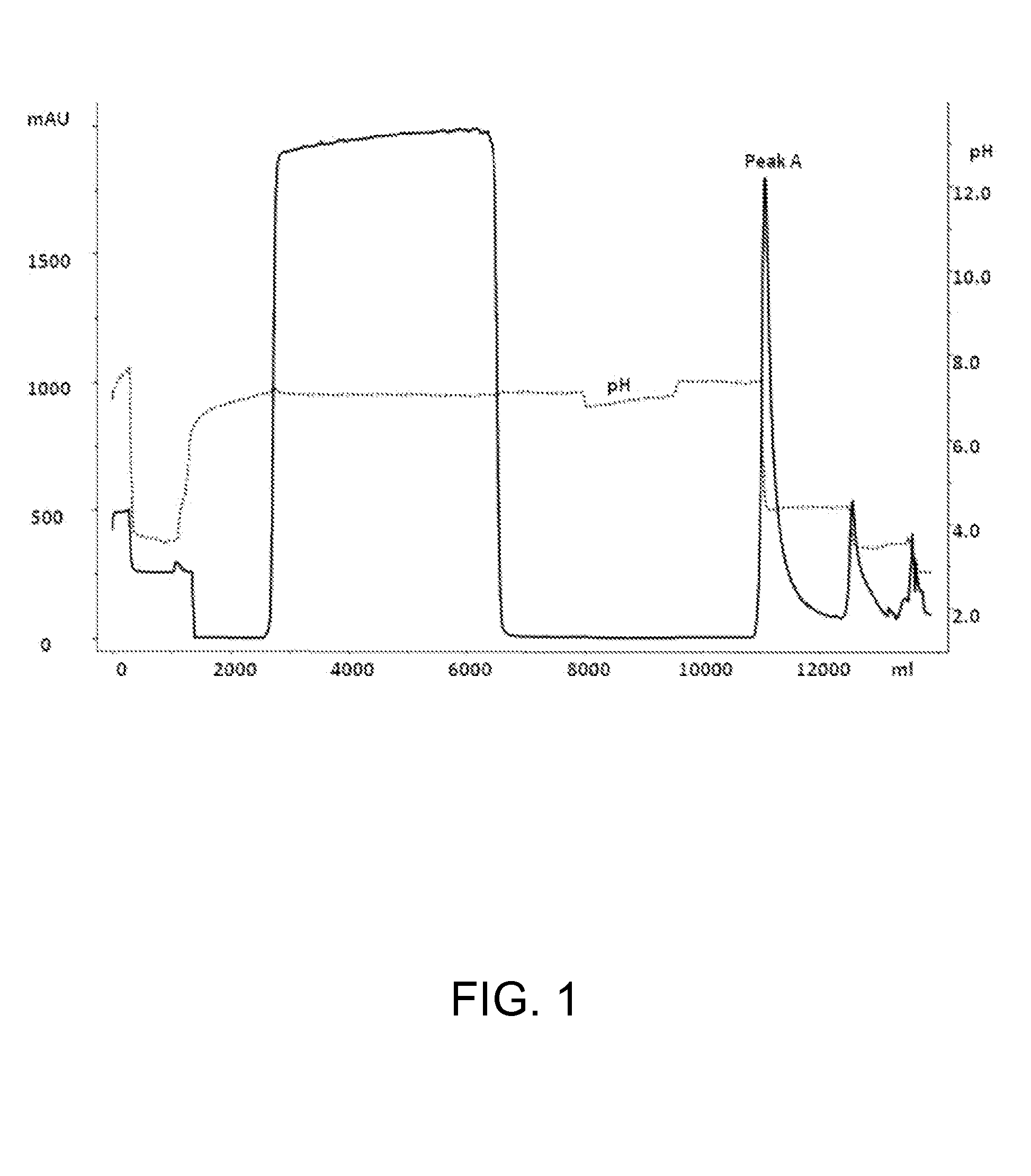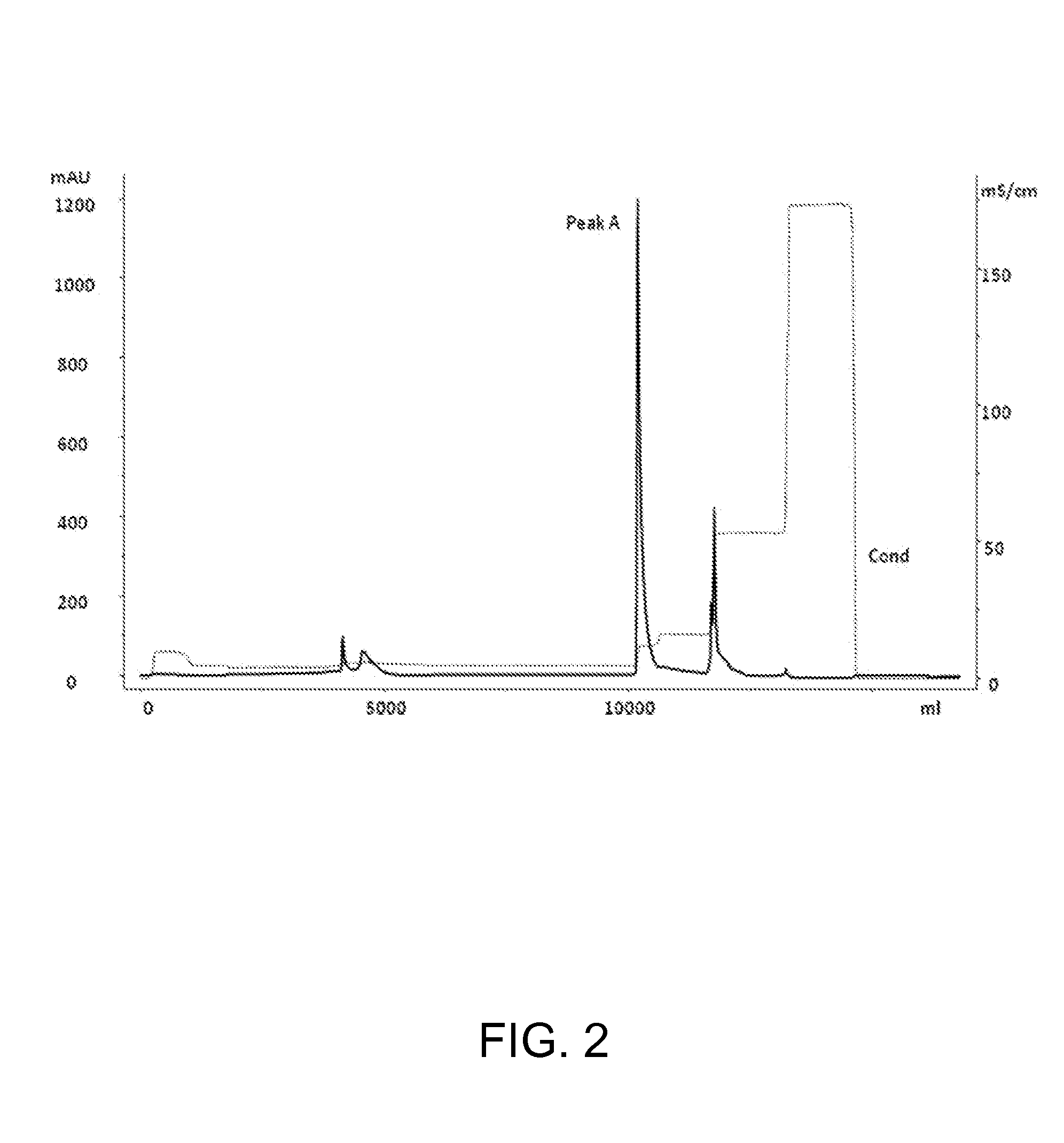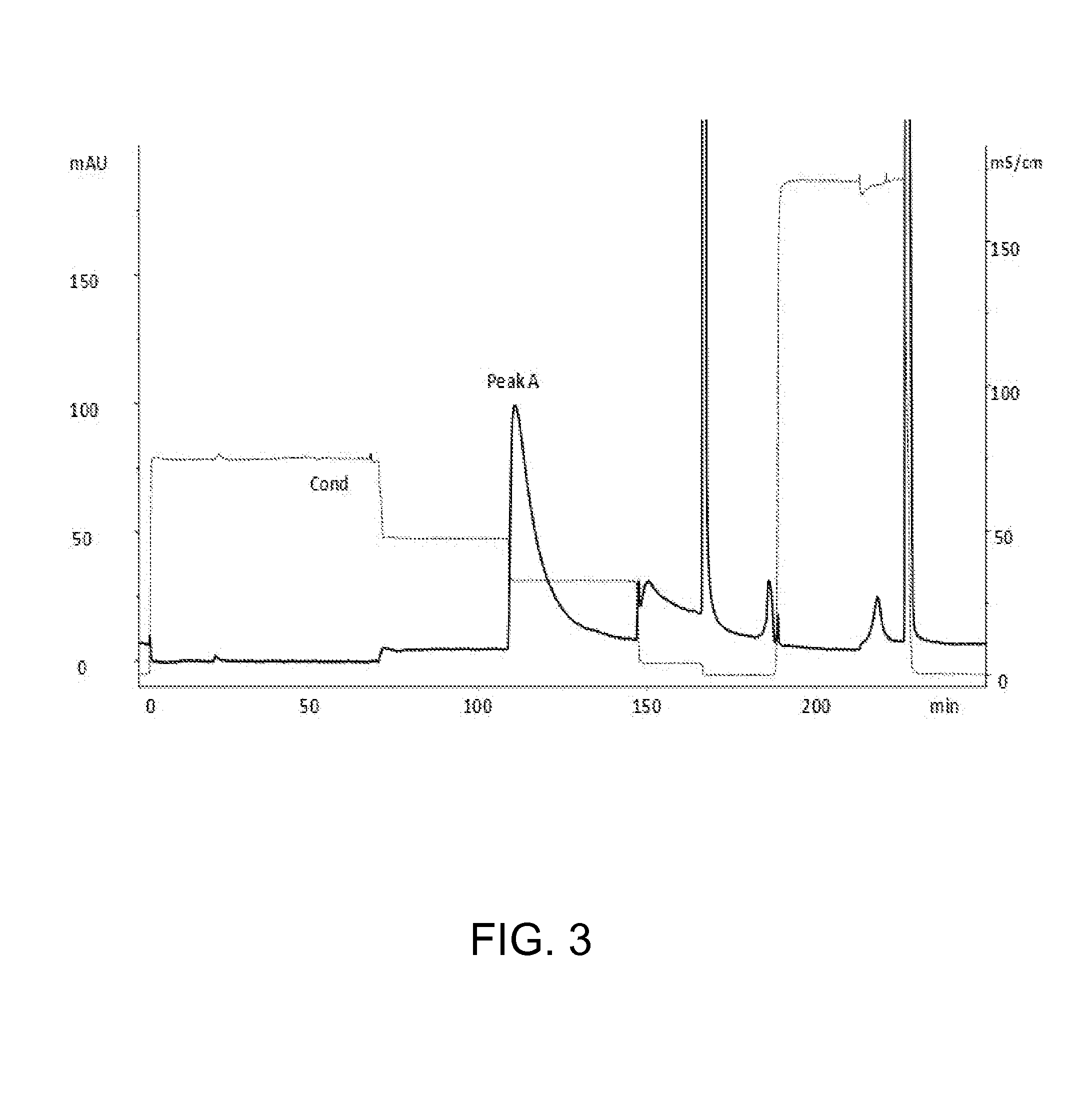Purification of chimeric protein
a technology of chimeric protein and purification method, which is applied in the field of purification of chimeric protein, can solve the problems of health risk, protein denaturation and aggregation, and difficulty in purification process
- Summary
- Abstract
- Description
- Claims
- Application Information
AI Technical Summary
Benefits of technology
Problems solved by technology
Method used
Image
Examples
example 1
Chromatography I: Protein A Chromatography
[0035]The clarified cell culture broth was subjected to a protein A affinity chromatography to purify Etanercept. The protein A chromatography was carried out on a Prosep VA ultra column (Millipore). The cell culture supernatant was loaded onto the protein A chromatography column that was equilibrated with equilibration buffer, 50 mM Sodium acetate pH 7.0 and 0.15 M NaCl. The column was then washed with the same buffer followed by high salt wash with 50 mM Sodium acetate pH 7.0 with 0.75 M NaCl. The bound protein was eluted with 70% of 0.2 M Acetic acid and 30% 50 mM Sodium acetate.
example 2
Chromatography II: Anion Exchange Chromatography
[0036]The eluate from example 1 was loaded onto the anion exchange chromatographic resin that was pre-equilibrated with 50 mM Phosphate buffer at pH 6.3. The desired protein was then eluted using 50 mM Phosphate buffer containing NaCl at pH 6.3.
example 3
Chromatography III: Hydrophobic Interaction Chromatography
[0037]The eluate at the end of example 2 was loaded onto the hydrophobic interaction chromatography chromatographic (TSK-Butyl 650M) that was pre-equilibrated with 2 M sodium acetate, pH 6.2. The desired protein was then eluted using 0.67 M Sodium Acetate pH 6.0, at a conductivity of 32 mS / cm.
EXAMPLE 4
Chromatography IV: Hydrophobic Interaction Chromatography
[0038]Alternatively, the eluate from example 1 was loaded onto the hydrophobic interaction chromatography chromatographic resin (TSK-Butyl 650M) that was pre-equilibrated with 425 mM Sodium Citrate, 50 mM Phosphate, pH 6.5 to bind the protein on to the column. The protein was then eluted using 212 mM Sodium Citrate, 50 mM Phosphate, pH 6.5, at a conductivity of 34 mS / cm.
PUM
| Property | Measurement | Unit |
|---|---|---|
| conductivity | aaaaa | aaaaa |
| pH | aaaaa | aaaaa |
| pH | aaaaa | aaaaa |
Abstract
Description
Claims
Application Information
 Login to View More
Login to View More - R&D
- Intellectual Property
- Life Sciences
- Materials
- Tech Scout
- Unparalleled Data Quality
- Higher Quality Content
- 60% Fewer Hallucinations
Browse by: Latest US Patents, China's latest patents, Technical Efficacy Thesaurus, Application Domain, Technology Topic, Popular Technical Reports.
© 2025 PatSnap. All rights reserved.Legal|Privacy policy|Modern Slavery Act Transparency Statement|Sitemap|About US| Contact US: help@patsnap.com



